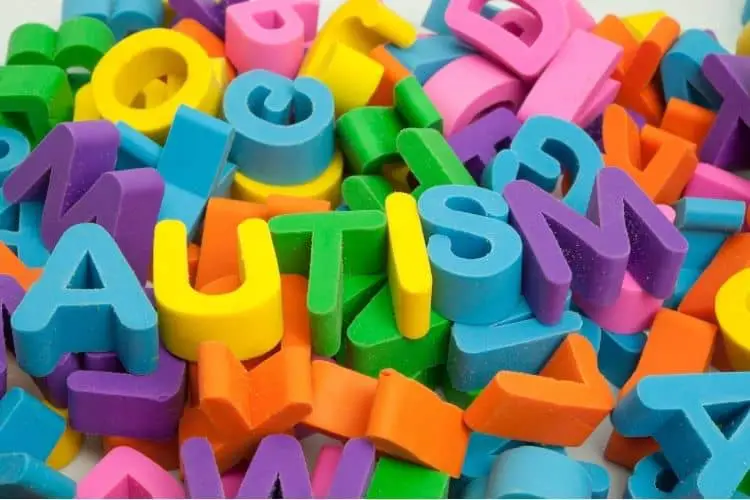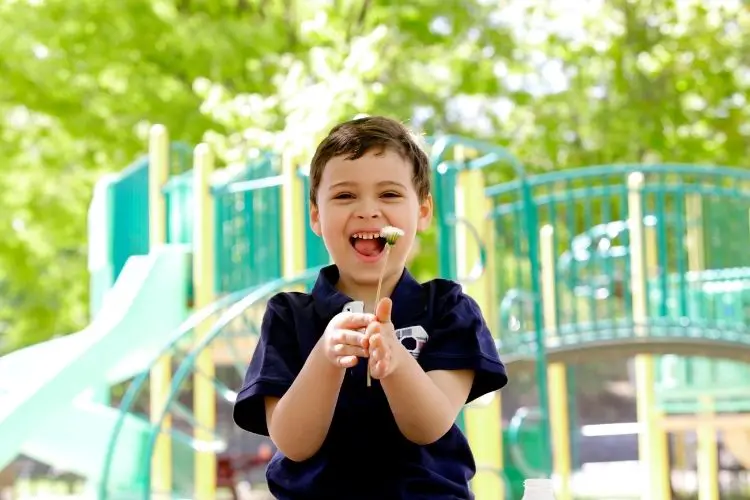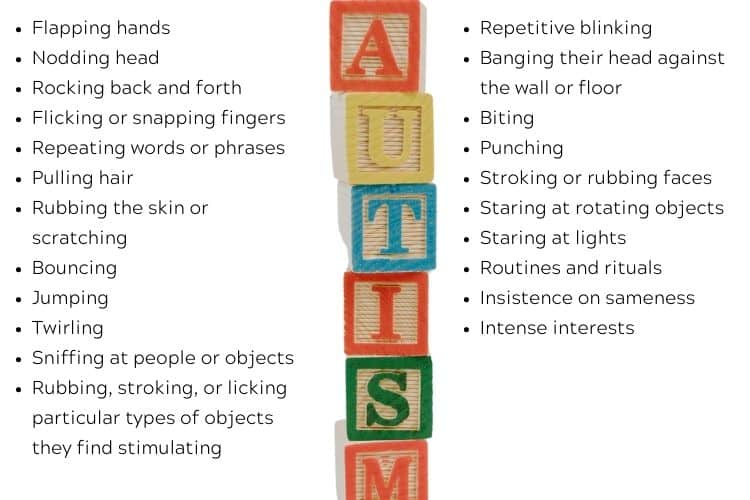While autism stimming is common, behaviors can be wide and varied. Some are harmful and need intervention, but many reap positive benefits and can produce calm.
individuals with autism can become fixated with something or have the need to repeat behaviors over and over. We may not see why they are doing it, but these fixations don’t hurt the child and are sometimes even comforting.
They aren’t necessarily something that needs to be stifled, but they do need to be addressed if they are disturbing other people or interfering with your child’s quality of life.
One study found that children with autism tested had significantly greater severity ratings for compulsions, stereotypy, and self-injury. Repetitive behavior severity also predicted severity of autism.
Children with autism are not the only demographic that stim. If you bite your nails constantly, if you drum your fingers on a table-top or chew a pencil when you are deeply concentrating; they are all forms of stimming.
Autism Stimming for the ASD child might be more noticeable and sometimes can become uncontrollable and may need management.

Lower Order and Higher Order Autism Stimming Behaviors
While repetitive behaviors are not unique to autism, according to a study published in the Journal of Neuropsychiatry, autism stimming one of the three core diagnostic domains of autism.
These repetitive behaviors are divided into two categories: lower order and higher order behaviors.
Lower order behaviors are the repeated motor or vocal behaviors you often see. Higher order behaviors are things like insistence on sameness. Examples of each will be given below.
Another study researched how these lower and higher order behaviors occur over an extended period, specifically relating to children who were non-verbal at the age of 2 years.
Their results found that lower order behaviors were consistently high over time indicating consistent severity but there was no correlation between being non-verbal and higher order behaviors.

In contrast, higher order behaviors started low and increased over time, indicating that they worsened over the time period.
Having a higher nonverbal intelligence at age 2 was associated with milder low order behaviors and with improvement in these behaviors over time. There was no relationship for these same children between nonverbal intelligence and higher order behaviors.
However, for children with milder social/communicative impairment at age 2, it was associated with more severe concurrent higher order behaviors. According to the study, children who are nonverbal at the age of 2 have a greater chance of developing more severe low order behaviors but that they improve over time.
For children with milder social/communicative impairment at age 2, there is a higher chance of developing higher order behaviors which tend to remain consistent.

What is Autism Stimming?
Autism stimming is the common name given to these repetitive or unusual movements or noises. Its name comes from the fact that these are self-stimulating behaviors.
It can include full body or more isolated movements. An individual may do it when they are overwhelmed, excited, anxious, happy, or use it as a source of comfort. Some examples for a child with autism might include:
LOWER ORDER AUTISM STIMMING BEHAVIORS
- Flapping hands
- Nodding head
- Rocking back and forth
- Flicking or snapping fingers
- Repeating words or phrases
- Pulling hair
- Rubbing the skin or scratching
- Bouncing
- Jumping
- Twirling
- Sniffing at people or objects
- Rubbing, stroking, or licking particular types of objects they find stimulating
- Repetitive blinking
- Banging their head against the wall or floor
- Biting
- Punching
- Stroking or rubbing faces
- Staring at rotating objects
- Staring at lights
HIGHER ORDER AUTISM STIMMING BEHAVIORS
- Routines and rituals
- Insistence on sameness
- Intense interests
When autism stimming, a child may be aware they are doing it but may not understand that it may be bothering other people due to a lack of understanding and a reduced ability to interpret social cues.
Stimming may help them calm down, because them to focus on the movement (or sound).

When Does Autism Stimming Need Managing?
Intervention or management may be needed in the following situations:
- If the behavior is disrupting others in social settings (e.g. school)
- If they have started to seclude or isolate themselves because of the stimming
- If their ability to learn is being compromised
- If they are in danger or it is producing self-harm (e.g. repeatedly banging their head on the floor and making it bleed)
- If it is affecting other family members in a negative way
- If they are causing destruction because of their behavior
- If it stops them engaging in more meaningful activities
Autism Stimming and Self Injurious Behavior
Most autism stimming is harmless and although it may become disruptive at times, it does not place them in danger.
With some individuals with autism, however, stimming may result in self-harm. This can be an issue for those on the spectrum with an intellectual disability and/or limited communication skills.
Autism stimming that crosses the line into self-injurious behavior is categorized as behaviors that result in injury to the person’s own body. Some behaviors that may be categorized as self-injurious are:
- Skin rubbing or scratching (the repetition doesn’t stop when the skin breaks and starts to bleed. This can cause wounds that then scab or become infected which they continue to rub or scratch)
- Banging their head against a wall or on the ground
- Punching themselves
- Hitting themselves
- Biting themselves
- Swallowing dangerous objects or substances
Needless to say, if autism stimming is causing self-jury, it needs to be managed. For these individuals, the help of a professional to see if there is a medical cause would be an appropriate course of action.
If no medical cause can be found, then limiting (or providing more) stimulation in the environment will help, depending on what is causing the stimming in the first place.

8 Ways to Manage Autism Stimming
Understanding the cause or the trigger from the behavior is essential before you can help your child manage it.
Is it due to excitement, overwhelm, stress, anxiety, happiness or just because it is soothing?
If it is due to being stressed, then the environment they are in needs to be managed to try and mediate the level of stress. It is only when you have a clear understanding of the triggers that you can start to try to eliminate them.
Here are 8 suggestions that may help:
- Try to eliminate as many triggers as you can
- Daily routines and predictability
- Invest in acceptable types of stimulating behaviors (such as a stress ball or fidget spinner). There are many products on the market that can be used as a replacement for the behavior. Find one your child likes.
- Try to have a calm environment
- The use of music through headphones can help depending on the cause
- Provide other sensory stimulating activities (e.g. going for a walk, jumping on a trampoline, carrying heavy objects)
- Autism stimming caused by anxiety may benefit from medication if severe enough. Seek the advice of a professional who deals with ASD
- Seek guidance from professionals who work with children with autism to see if available therapies will help. There is applied behavioral therapy (ABA), sound therapy (like the one I am a certified practitioner of) or a combination of different therapies.
A child should never be punished for stimming. If it is harmless to themselves or others, then let them stim. If you need to intervene and manage the behavior, explain why it needs to change and offer alternatives (like stress balls or fidget objects).
It is going to be a learning process and one that will be trial and error until you find the cause and then replacements (if necessary).

Autism Stimming: A Form of Vestibular Seeking
Look at some of the behaviors of autism stimming. Hand flapping, shaking the head etc; can you see how the child is stimulating the vestibular system during these behaviors?
Shaking the head or head banging moves the head and gives direct information regarding speed, direction, and space. It stimulates the vestibular system in an overly aggressive way (as does spinning and various other forms of stimming) which, without knowing it, the child is trying to achieve.
If autism stimming is done because of overwhelm, the child is stimulating the vestibular system and other senses to decrease the overall sensory overload.
Through my sound therapy work, I have seen children with autism reduce their fixated behaviors by increasing their ability to process sound more effectively. It also stimulates the vestibular system, but also changes the brain in a way that helps with so many of the issues children with ASD face.
It is not a cure by any means, but I have seen huge benefits for many children with autism through increased processing skills which have positively affected behavior and skills.
Autism Stimming and Anxiety
One study has highlighted a relationship between repetitive behaviors and anxiety. The study examined repetitive behaviors and anxiety in two groups of children with ASD, those with high anxiety and those with lower levels of anxiety.
Children with high anxiety had lower order repetitive behaviors than those without anxiety. The same children also had higher levels of insistence on sameness (higher order behaviors).
Related Questions
What are unusual stims for autism?
Unusual stims for a child with autism may not feel so unusual to them but may seem very unusual to us because we would not dream of doing it.
These may include:
* Licking the bottom of shoes or other textured objects
* Picking bits out of a carpet
* Flicking switches
* Hand ringing – talking into the hand as it is held in the shape of a phone
What does autistic stimming feel like?
Autistic stimming can feel calming to a child with ASD. Sometimes it may be so minimal that they don’t even know they are engaging in repetitive behavior. If something negative is involved (such as banging the head on the floor or wall until they bleed) they may not even be registering a pain threshold in the moment. That may come later when the need for autistic stimming has passed.
For repetitive behaviors that are harmless, it feels calming to the individual, allowing them to focus on a single repeated movement (or word if they are repeating words or a sequence of words).

